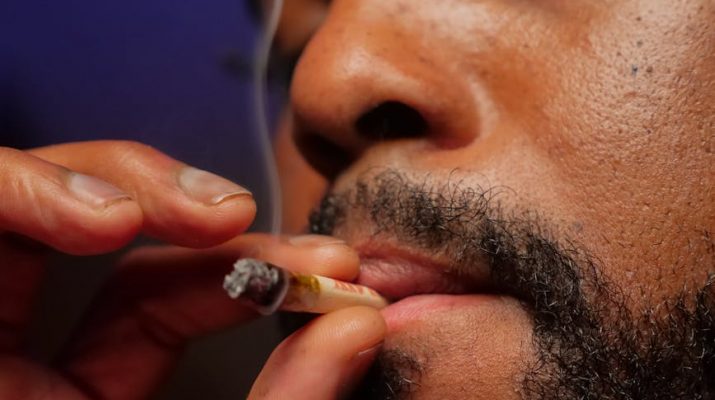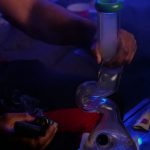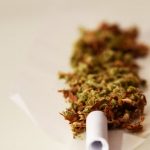When it comes to drug tourism, two cities that often come to mind are Prague and Amsterdam. Both cities have a reputation for their lenient attitudes towards drug use, but there are some key differences between the two. In this article, we’ll compare and contrast the drug tourism scenes in Prague and Amsterdam.
Amsterdam’s Coffee Shops
Amsterdam is famous for its coffee shops, where cannabis can be purchased and consumed on the premises. These coffee shops are licensed by the city and are subject to certain regulations, such as not allowing the sale of hard drugs or alcohol. The coffee shops are a major tourist attraction, with many visitors coming to Amsterdam specifically to experience the city’s relaxed attitude towards cannabis.
Prague’s Drug Scene
Prague, on the other hand, does not have a similar system of licensed coffee shops. However, the city has a thriving drug scene, with many bars and clubs offering cannabis and other substances. The drug scene in Prague is more underground than in Amsterdam, with many establishments operating outside of the law. This can make it more difficult for tourists to navigate, as they may not know where to find safe and reliable sources of drugs.
Safety Concerns
One of the main concerns for tourists visiting either city is safety. In Amsterdam, the coffee shops are generally well-regulated and safe, with staff on hand to advise customers on the different strains of cannabis available. In Prague, the lack of regulation can make it more difficult for tourists to know what they’re getting, and there is a higher risk of encountering counterfeit or adulterated substances.
Law Enforcement
Both cities have laws against the possession and sale of certain substances, but the approach to enforcement differs. In Amsterdam, the police tend to focus on hard drugs and organized crime, leaving the coffee shops to operate relatively freely. In Prague, the police may be more likely to crack down on drug-related activity, particularly if it involves hard drugs or large quantities of substances.
- Research local laws and regulations
- Be aware of your surroundings and the people you’re with
- Start with small amounts and be cautious of unknown substances
By being informed and taking necessary precautions, tourists can have a safe and enjoyable experience in either city.
Drug-Related Tourism Statistics
According to various studies, Amsterdam’s coffee shops attract a significant number of tourists, with estimates suggesting that around 30% of visitors to the city visit a coffee shop during their stay. In contrast, Prague’s underground drug scene is more difficult to quantify, but it is believed that a smaller percentage of tourists engage in drug-related activities.
Types of Substances Available
In Amsterdam, the most commonly available substances in coffee shops are cannabis and hashish, with some shops also offering other products such as space cakes and CBD-infused drinks. In Prague, the range of substances available is more varied, with some establishments offering cannabis, ecstasy, and other synthetic substances.
Regulation and Licensing
Amsterdam’s coffee shops are subject to strict regulations, including licensing requirements, age restrictions, and limits on the amount of cannabis that can be purchased; In Prague, the lack of regulation means that there is no equivalent system of licensing, and establishments may operate with relative impunity.
Impact on Local Communities
The impact of drug tourism on local communities is a topic of debate. In Amsterdam, some residents have expressed concerns about the noise, nuisance, and increased crime associated with the coffee shops. In Prague, the underground nature of the drug scene means that the impact on local communities is less visible, but some residents have reported concerns about the presence of dealers and users in certain areas.
Government Initiatives
In recent years, both the Dutch and Czech governments have implemented initiatives aimed at reducing the negative impacts of drug tourism. In Amsterdam, the city has introduced measures such as increased policing and stricter regulations on coffee shops. In Prague, the government has launched public awareness campaigns and increased funding for addiction treatment services.
- Researching local laws and regulations
- Being aware of the risks associated with drug use
- Taking necessary precautions to stay safe
- Considering alternative activities and attractions
By being informed and responsible, tourists can help minimize the negative impacts of drug tourism and have a positive and enjoyable experience in either city.
Comparison of Drug-Related Arrests
In terms of drug-related arrests, Amsterdam tends to have a more relaxed approach, with a focus on educating and warning tourists rather than making arrests. In 2020, the Amsterdam police reported a total of 1,444 drug-related arrests, with the majority being for possession of small amounts of cannabis. In contrast, Prague has a more stringent approach, with a total of 3,611 drug-related arrests in 2020, according to the Czech Republic’s National Drug Headquarters.
Impact on Tourism Industry
The drug tourism industry has a significant impact on the local economy in both cities. In Amsterdam, the coffee shops generate an estimated €200-300 million in revenue each year, with a significant portion of this coming from tourism. In Prague, the underground drug scene is more difficult to quantify, but it is estimated that the city’s nightlife industry, which includes bars and clubs that cater to drug users, generates around €100-200 million in revenue each year.
Efforts to Reduce Drug-Related Crime
Both cities have implemented initiatives aimed at reducing drug-related crime and improving public safety. In Amsterdam, the city has introduced a number of measures, including increased policing, improved lighting, and the creation of “drug-free” zones. In Prague, the city has launched a number of initiatives, including public awareness campaigns, increased funding for addiction treatment services, and the creation of a specialized police unit to tackle drug-related crime.
Recommendations for Tourists
If you are planning to visit either Amsterdam or Prague, here are some recommendations to keep in mind:
- Research the local laws and regulations regarding drug use
- Be aware of your surroundings and the people you are with
- Start with small amounts and be cautious of unknown substances
- Consider alternative activities and attractions
- Respect local customs and traditions
By being informed and responsible, you can have a safe and enjoyable experience in either city.
As the debate around drug tourism continues, it will be interesting to see how both Amsterdam and Prague evolve in their approaches to drug use and regulation. With the rise of cannabis legalization in other countries, it is possible that we will see changes in the way that both cities approach the issue. One thing is certain, however: both Amsterdam and Prague will continue to be popular destinations for tourists, and it is up to each individual to make informed and responsible choices about their activities while visiting.







I found this article to be very informative and helpful in understanding the differences between Prague and Amsterdam when it comes to drug tourism. The comparison between the two cities was well-balanced and highlighted some important safety concerns that tourists should be aware of.
I was surprised to learn about the differences in law enforcement approaches between Amsterdam and Prague. It\
As someone who has visited both Prague and Amsterdam, I can attest to the fact that the drug scenes in these cities are quite different. I appreciated how this article shed light on the underground nature of Prague\